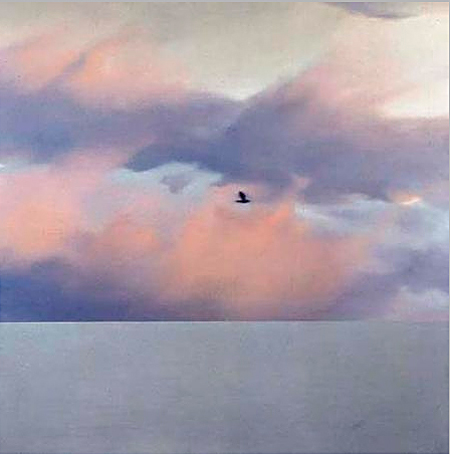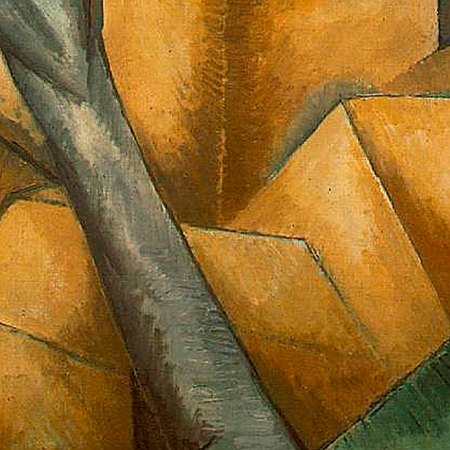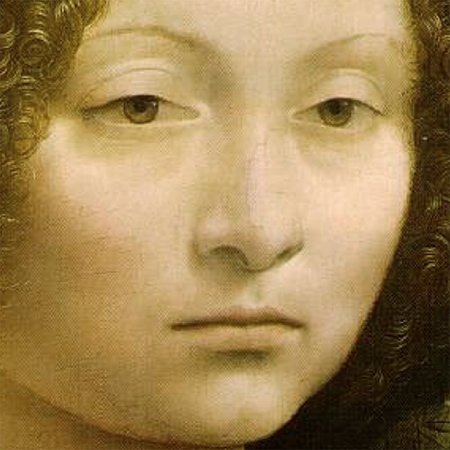The power of sfumato, the blending of colours or tones so that there is no perceptible transition, was used by Da Vinci and Gerhard Richter to represent an idea of female beauty and the expanse of a seascape, respectively.
Leonardo Da Vinci, Ginevra de’ Benci, c. 1475

Gerhart Richter, Seascape with Bird-1970
The power of outlining was used for a variety of seemingly conflicting presentations of subtlety/lightness by Botticelli, surrealism/playfulness by de Chirico and abstractness/stark purpose by Braque.
Sandro Botticelli, Primavera, c.1482
Giorgio de Chirico, Hector and Andromache, 1917

Georges Braque, Houses at L’Estaque, 1908
Can you help me to understand these technique or their purpose better?




Birgit,
Helping you “Understand” may be beyond my capacity, but here’s one take on what you’ve shown:
The “sfumato” is aligned with what I think of as the “no-brush” technique — where the idea is to demolish any sense that an artist has taken a tool to the surface. I’ve seldom seen it used in contemporary painting, although you have more experience than I in looking at examples — I think they don’t teach that totally smooth transition anymore. I see a softness to the edge of the face, a tiny back and forthness between the dark-dark of the background and the light of the flesh. Of course, the shadowing to indicate roundness helps, as does the bit of hair curling about. Look at those lips and how they blend at places. No botox there, thank heavens!
The Richter is stunning — notice how the line of ocean horizon disappears at the right side near the edge — and how the apparently flat gray actually recedes because of color change. Wonderful!
de Chirico uses the outlining of the contours specifically to insist (I think) that what is there is nonsense. I read this partly as a thumbing of the nose at those wooden figures you can buy in art stores to practice figure drawing. He’s also, of course, refuting the impressionists and doing all sorts of other things at the same time. His figures are slightly modeled, but only slightly, so they are in tune with the geometries that surround them. And their outlines likewise — that is, they make hard edges like the triangles and shadows. I’m fond of the feet, which seem to me to break the geometries in charming ways.
Braque’s modeling reminds me of Emily Carr — and you can see how his lines marking the different cubes become soft edges and often disappear. It’s what someone called “volumetric space”, something I didn’t understand until I started copying Carr and realized that the volumes are created by value and then some lines imposed to trick the eye into reading as tightly delineated materials which are actually softly portrayed. [I’m not sure I even know what that last sentence means….] I think with the Braque, the change of value and color makes those shapes that are semi-outlined exciting.
Notice I skipped the Botticelli — that’s just magic and I’m incapable of analyzing magic.
I’m only giving you something of what I’m seeing, without knowing if that helps you understand — or even if I understand what I’m seeing. But articulation, even when incorrect, can sometimes get the conversation moving.
June,
Beautiful! I now understand why I found my painting naive. The hinge effect! With the Richter (padding myself on the back) I gave you a perfect example to illustrate your point! Also the Braque which I did not much care for until you explained about ‘volume space’ ‘…to trick the eye into reading as tightly delineated materials which are actually softly portrayed’. Continuing your edge lesson, Braque shows that not only horizontal but also diagonal lines should not be portrayed as hinges.
I too was thinking of Emily Carr as I selected the pictures.
Mimi’s comment from the last post raised the idea of sfumato using my friend photograph of Fishermen in the Mist. That in turn made me think of your Morning Fog in the Gorge.
¡Uauu!
Impresionante la elección de imágenes. Me encanta la sutileza de las formas.
¿Está tecnica a variado a lo largo del tiempo?
La elección de Braque me ha sorprendido, siento no hablar su idioma, de veras.
Gracias.
Un abrazo
Ah , le he incluído en mi lista de blog, en la parte izquierda.
El enlace le incluye traducido por google.
Mimi,
Que no entiendo muy bien tampoco Braque.
Hi, forgive me for butting in but I’m looking for examples of sfumato and ‘unione’ to show in my community art classes. This is such a good page to read that I wanted to join in, and would be grateful for any examples of ‘unione’ which I think is the exact point on Renaissance painting where the edges of objects and space meet and blend (sfumato is relatively easy to find on the net). Any offers?
Caroline,
I found the text below in The Cambridge Companion to Raphael
Series: Cambridge Companions to the History of Art, Edited by Marcia B. Hall
Could you explain in greater detail what ‘unione’ means?
Jay, can you help?
Birgit:
I’m trying to picture what a flowing unity among colors could be and Renoir comes to mind. But it certainly would seem to be something more definite. Googling, I came upon a treatise called “Bright Earth” by Philip Ball, who seems to employ this term. I think you’ll like this as Ball is a chemist.
Do ravens glide? I thought that corvusai (corvuses?) tended to just flap along a lot. These paintings are very interesting and I’m following your work.
Jay,
I am enjoying reading Philip Ball’s “Bright Earth” (2001). This is what he says about unione, one of the four canonical painting modes of the Renaissance:
With respect to Raphael:
With respect to Michelangelo:
translated by Google:
cangiantismo: iridescence
disegno: drawing